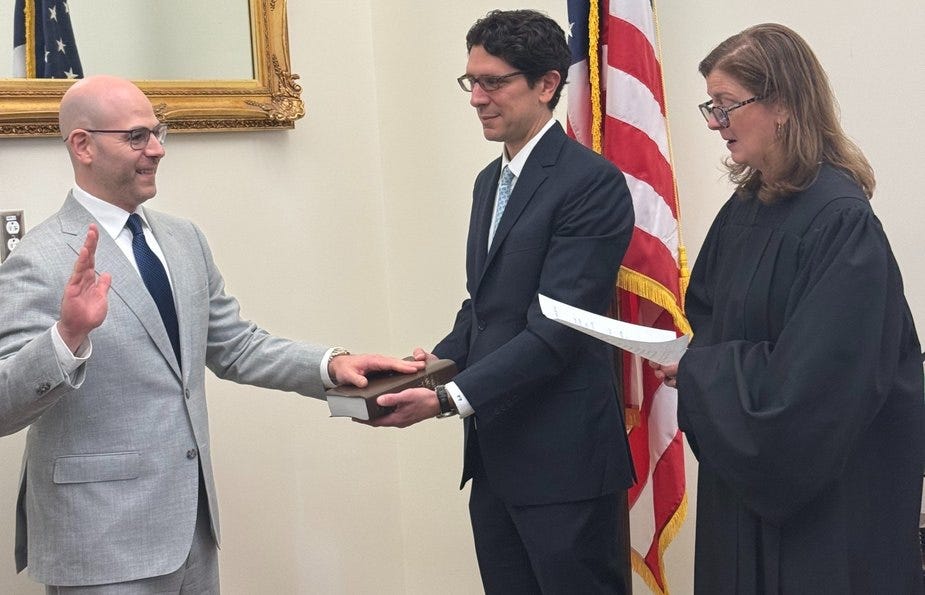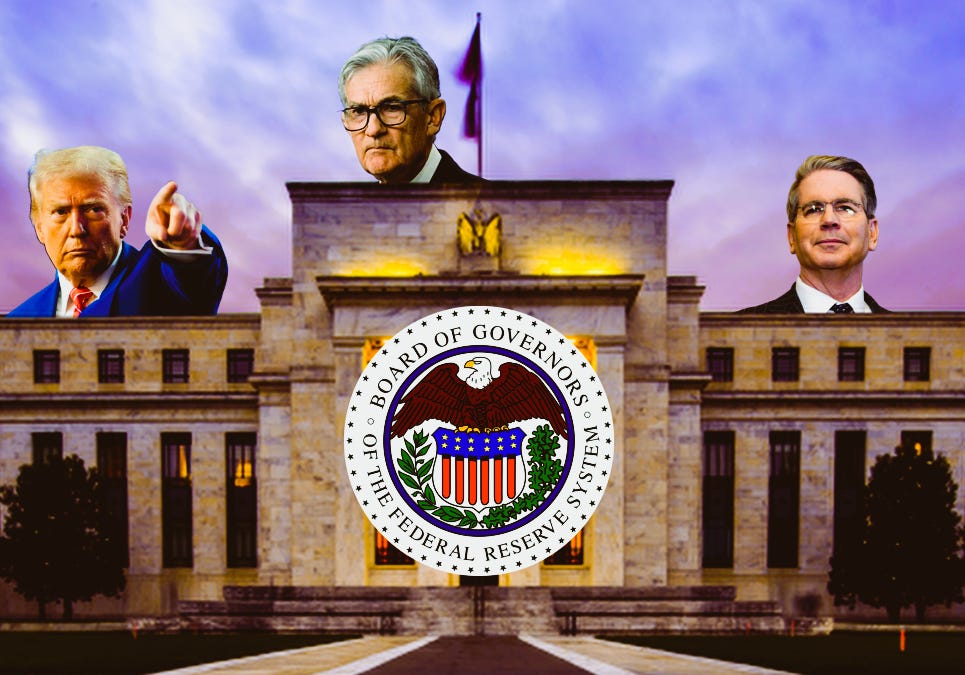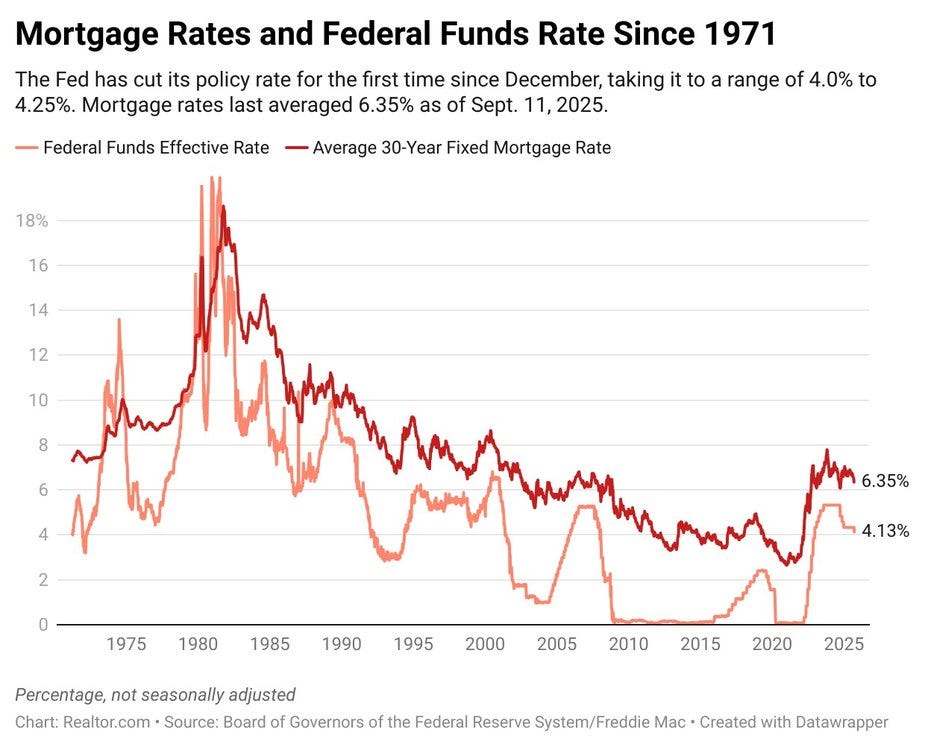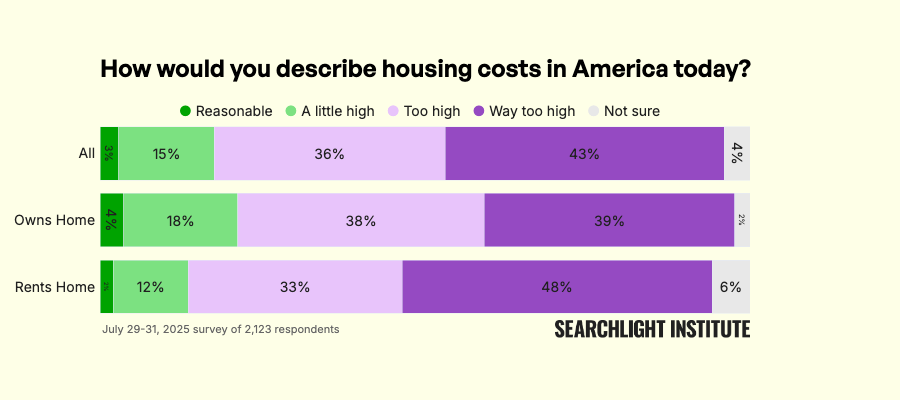The Fed's latest meeting signaled worry over the state of the economy
Concerns over a weak housing & labor market led to the Fed's first rate cut since December.
The minutes of the Federal Open Markets Committee’s (FOMC) latest meeting have been recently released. During the FOMC Sep. 16-17 meeting to set interest rate policy, members voiced concerns over a weak housing & labor market.
Most Fed officials felt that the risk of higher unemployment had worsened since their July meeting. Most Fed officials also supported more rate cuts.
Several participants noted continued weakness in the housing market, and a couple of participants mentioned the possibility of a more substantial deterioration in the housing market as a downside risk to economic activity.
— pg. 8, Minutes of the Federal Open Market Committee
Participants generally noted that their judgments about this meeting’s appropriate policy action reflected a shift in the balance of risks. In particular, most participants observed that it was appropriate to move the target range for the federal funds rate toward a more neutral setting because they judged that downside risks to employment had increased over the intermeeting period and that upside risks to inflation had either diminished or not increased.
…
Most judged that it likely would be appropriate to ease policy further over the remainder of this year.
— pg. 9, Minutes of the Federal Open Market Committee
The FOMC voted 11-1 for a quarter-point rate cut. Same-day appointed Gov. Stephen Miran called for a half-point cut, instead.
Voting against this action: Stephen I. Miran.
Governor Miran preferred to lower the target range for the federal funds rate by ½ percentage point at this meeting in light of further softening in the labor market over the first half of the year and underlying inflation that in his view was meaningfully closer to 2 percent than was apparent in the data.
— pg. 12, Minutes of the Federal Open Market Committee

The federal funds rate was brought down to a target range of 4%-4.25%. President Trump has long pressured the Fed to drop rates. Rate cuts can also lower borrowing costs for auto & business loans, stimulating spending & hiring, per the Fed. Mortgage rates & the federal funds rate are closely connected, per Realtor.com.
A Realtor.com March analysis concluded that “the U.S. housing shortage will take more than seven years to fix at the current rate of construction.” According to a July survey conducted by Tavern Research for the Searchlight Institute, Americans have a pessimistic view of the housing market.
A National Association of Home Builders (NAHB) study concluded that regulations account for “nearly 25% of the cost of a single-family home and more than 40% of the cost of a typical apartment development.” Treasury Secretary Scott Bessent recently announced that the Trump administration is considering declaring a national housing emergency.
The federal government shutdown has restricted the release of economic data that the Fed relies on. However, ADP’s latest jobs report revealed weak numbers.
Private employers shed 32,000 jobs in September
— September 2025 ADP National Employment Report®
Based on these various reports, the American economy leaves a lot to be desired. The government is aware & the ball is in its court.




